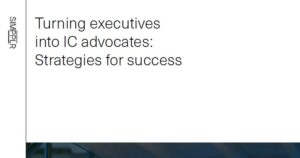Creating authentic communications strategies for social change
Lauren Keane of Southern New Hampshire University shares tips to create authentic communications that align with an organization’s values and mission.

A contest to be a sideline reporter for the day for the WNBA’s Connecticut Sun ignited the ambitions of Lauren Keane, now an associate VP of communications at Southern New Hampshire University, to write stories of strong women. The then-sixth grader, styled in a little pink blazer with a spiral-bound notebook to boot, interviewed small forward Nykesha Sales in the locker room.
“While the ambitions of most children change frequently,” said Keane. “I have never outgrown my competitive spirit, [my] desire to be part of a team, my love of telling an impactful story, [or] wanting to drive change on issues I care about.”
Ahead of her session at PR Daily’s Media Relations Conference, we caught up with Keane, who leads internal and external communications for the office of external affairs and communications at SNHU, to discuss the steps she takes to create authentic communications strategies for social change.
Authenticity is key to effective communication.
Effective communication, when it is rooted in authenticity and delivered with conviction, has the potential to ignite the flames of social revolution and bring about meaningful change. However, to be effective, communication strategies must be aligned with the organization’s values and mission.
The key to creating an effective communication strategy is to start with a solid foundation of the organization’s mission and values before planning communications initiatives, Keane said. “Every brand has a story to tell, but it has to be authentic and relevant to their audiences,” she said.
Keane emphasized that SNHU’s mission is to provide affordable and accessible pathways to a degree, making higher education accessible for social mobility in the US and globally.
But for so many people who have been left behind by traditional pathways to a degree, it is sometimes hard to see how they “fit in” to the higher education landscape cliché shown on movies and TV shows, she said.
[RELATED: Enter our PR Daily Awards by May 12]
One way SNHU drives change is by telling the stories of its students. For instance, SNHU celebrated 94-year-old student, Amy Craton, who graduated in 2016. In addition to attracting national and international attention, SNHU President Paul LeBlanc flew to Craton’s home state of Hawaii to present her degree certificate.
“Amy’s story resonated because people were inspired by her determination and message to ‘never stop learning,’” said Keane. “It showed those who were either working towards degrees or maybe those who deferred that dream when life got in the way, that if she can do it, they can do it, too.”
The 3-question comms approach.
Setting up a comprehensive communications strategy is crucial for any organization, especially those focused on social change. A well-designed strategy can help achieve organizational objectives, enhance the organization’s reputation, and build relationships with stakeholders.
One plan of action that Keane and her team often use when deciding on a strategy, big or small, is the know-feel-do communications approach. The conversations are led by three questions:
1) What do you want your audience to know/think?
2) How do you want them to feel?
3) What do you want them to do with the information you are sharing?
These questions can be used to start conversations for large-scale initiatives, or even subconsciously as you are drafting an email or talking points, Keane said. This exercise helps everyone get on the same page as you begin a comms strategy.
“Sharing this strategy with leaders across the university has also empowered them to think this way before they even come to our team with requests,” said Keane. “[It’s] led to faster and more productive communications.”
Understand your mission begins with your employees.
Your company’s mission needs to start internally before it can resonate externally. Belonging, purpose and values are increasingly important to employees and consumers alike, and leaders who fail to “walk the talk” risk losing the trust and respect of those they lead.
A perfect example is Keane herself. The communications veteran was initially influenced to pursue this career by a college professor at American University. Keane knew two things: she wanted to help make a difference in this world and pursue communications.
“What fueled me to stay in this career is seeing how coordinated and strategic communications can help propel initiatives forward or create change in people’s lives and communities,” said Keane.
Employees like Keane who embody the principles they espouse are truly committed to making a positive impact.
“I think for-profit organizations have a lot to learn from the non-profit sector,” said Keane. “Every organization today has a responsibility to think about how they are leaving the world better than they found it.”
Join Keane at PR Daily’s Media Relations Conference on June 5-6. She will speak alongside communications leaders from APCO Worldwide, Edelman, Mars Inc., National Association of Government Communicators, National Public Radio, Raytheon Missiles & Defense, Southwest Airlines and many more.
Isis Simpson-Mersha is a conference producer/ reporter for Ragan. Follow her on LinkedIn.
COMMENT
One Response to “Creating authentic communications strategies for social change”
PR Daily News Feed
RECOMMENDED READING
Top trends in employee engagement for internal communications
Tags: Social change








The more successfully your communications get people to want social change, the happier your management will be with you and the more successful your career is likely to be, right?
Maybe but maybe not.
Does management really want social change or do they want to LOOK like they want social change? Do your senior executives live in racially mixed neighborhoods and do their children date kids of other races? If your marketing or PR chief must sometimes go out of town on short notice, would he or she prefer top aides to be of the same gender or does it really not matter?
Are you tempted to avoid hiring, to reduce your chances of being suspected or accused, an assistant who is a spectacular beauty?
Your top management may strongly, even emotionally, want more fairness but judge whether they do. Fairness is admirable but there is no law against being conscious of fairness to yourself